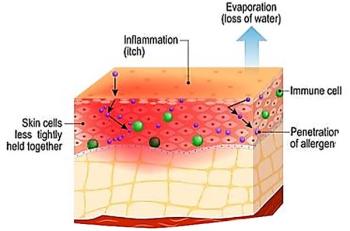
5 Updates in Asthma for Primary Care
What do you get when you cross asthma with COPD? How does an asthma Dx reduce antibiotic Rx? And what about vitamin D and asthma, anyway? Get answers and evidence in 5 easy pages.
If it’s not really asthma but not really COPD-what is it called?
ACOS is the acronym for “
Asthma and COPD can be
It exhibits symptoms like asthma that may be variable day to day and week to week usually beginning in childhood or adolescence.
Plus spirometry results consistent with COPD (FEV1/FVC <.70 and FEV1 <80% of predicted that does not reverse completely to normal range with short-acting bronchodilators).
ACOS usually is seen in a person with long-standing asthma who is also a smoker. Unlike the typical asthma history, the level of lung function in ACOS progressively gets worse similar to the disease progression seen in COPD.
People with ACOS have worse treatment outcomes, more frequent exacerbations, poorer quality of life, more rapid decline in lung function, and a disproportionately high use of health care resources.
Treatment for ACOS is still really empirical and based on combining first-line asthma treatment
(inhaled corticosteroids [ICS]) with first-line COPD treatment (long-acting bronchodilator therapy-either Ã2-agonists; LABA or antimuscarinic; LAMA medications) or the combinations of both.
Therefore, individuals with ACOS are treated with combination therapy of ICS+LABA or ICS+LAMA or ICS+LABA+LAMA.1
But stay tuned, just as for the treatment of COPD, the value of ICS for reduction of exacerbations in ACOS is being questioned. For now, most physicians will continue to prescribed combination ICS and long-acting bronchodilators, but that could change in the near future.2
1. Papaiwannou A, Zarogoulidis P, Porpodis K, et al.
2. Lim HS, Choi SM, Lee J, et al.
Successful asthma treatment takes more than getting the Rx right; inhaler technique education and revieware essential
Prescribing proper medications for asthma based on severity and control assessment is important.3 But the patient still needs to get the medication to the target to ensure that outcomes will improve.
Significant attention has been given to problems with adherence but even if an inhaler is used regularly, it must also be used properly. Recent studies suggest that once is not enough to teach inhaler technique. Several studies have demonstrated that patients develop errors in inhaler technique as the time since teaching lengthens.
But a new study (granted from Turkey and of modest size-but still valuable) suggests that repeated education can help maintain good inhaler technique.4
3. Rank M, Bertram S, Wollan P, et al.
4. Yildiz F.
Reducing antibiotic prescriptions by diagnosing all those missed asthma cases
We have all seen children aged 2 to 16 years who just keep getting prolonged respiratory infections or “bronchitis”-whatever that may be. These are not the toddlers and preschoolers with the runny nose that is passed around at daycare; these are the youngsters that have cough and “colds” that last weeks instead of days.
For the first time, a group has demonstrated that assessing, and when present, diagnosing asthma in those children can reduce the need for antibiotics in the following year.
A group of children (N=332) with repeated episodes (≥3 in a year) of respiratory infections for whom antibiotics had been prescribed were studied. When asthma was diagnosed and the children were treated for asthma, there was a reduction from an average of 7 antibiotic prescriptions per year down to only 2 per year.5
The message: correct diagnosis and treatment of asthma with daily anti-inflammatory medication can reduce the number of episodes of “bronchitis”-actually probably asthma exacerbations-treated with antibiotics.5
Within your patient population, be suspicious of recurrent diagnoses of “bronchitis,” “chest colds,” or bad colds in children.
Think possible asthma and proceed with asthma evaluation.
5. Gedik AH, Cakir E, Ozkaya E, et al.
Vitamin D supplementation does not improve asthma outcomes
For several years there has been speculation that vitamin D was potentially important in asthma control and outcomes, particularly for children and adults with low serum vitamin D3 levels.
A large US clinical trial enrolled adult patients with symptomatic asthma and a serum 25-hydroxyvitamin D level of <30 ng/mL. The group that was randomized to 28 weeks of oral vitamin D3 supplementation (100,000 IU once, then 4000 IU/d for 28 weeks) did not have any improvement in time to first asthma exacerbation compared with those receiving a placebo.
None of the secondary outcomes showed any improvement either. The message-these data from the largest clinical trial to date do not support use of vitamin D3 in improving asthma outcomes among adults with vitamin D insufficiency.
You may choose to treat the vitamin insufficiency for other reasons, but it does not appear that it will improve asthma control or decrease asthma exacerbations.6
6. Castro M, King TS, Kunselman SJ, et al.
Is montelukast as effective as ICS in asthma management?
Montelukast is an oral leukotriene antagonist that has been used for many years to replace ICS in children and adults with mild to moderate asthma. Recent systematic reviews suggest that montelukast is clearly better than placebo but not as effective as ICS or ICS+LABA in reducing exacerbations or improving control in either children or adults.7,8
This supports the recommendation in the 2007 national asthma guidelines of ICS as the first-choice anti-inflammatory medication for persistent asthma. So, is there a place for oral montelukast? Yes.
It can be used as alternative therapy for patients or physicians who are concerned about the long-term side effects of ICS-preferably in patients with mild to moderate asthma.
These results are supported by a pragmatic trial of primary care patients that reported that ICS and montelukast were equivalent at 2 months but not 2 years in affecting asthma control and asthma-related quality of life.
The role for adjunct montelukast (added to ICS or ICS+LABA) in moderate to more severe asthma is still in question.9
7. Massingham K, Fox S, Smaldone A.
8. Zhang HP, Jia CE, Lv Y, et al.
9. Price D, Musgrave SD, Shepstone L, et al.
Newsletter
Enhance your clinical practice with the Patient Care newsletter, offering the latest evidence-based guidelines, diagnostic insights, and treatment strategies for primary care physicians.






























































































































































































































































































































